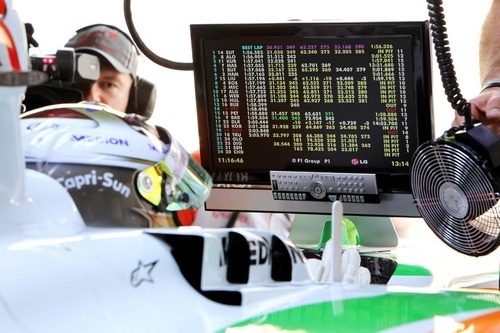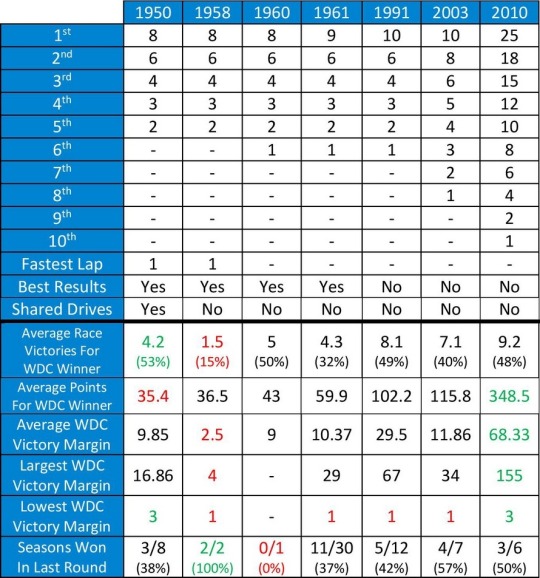
Formula One has had many different points systems for the World Drivers’ Championship over the years. In the sport’s history, we have saw seven main changes to the points system. Formula One currently distributes more points during a season than they ever have before. To see how to rule changes have impacted the World Drivers’ Championship battles throughout the years, Racing Clothesline did some statistical calculations.

The World Drivers’ Championship winner now earns ten times as many points as the drivers did during the 1950s. With more points being awarded throughout the season, the average championship margin has dramatically increased, making the championship battles appear not as close as they were in the sport’s earlier history. Despite this, the championship title is a little more open to the drivers, with more seasons going into the final race without a driver having already won the championship title.
The big story in the recent seasons is about the level of domination in Formula One. Surprisingly, it appears that the domination in the current era of Formula One hasn’t really changed since the sport was formed. Each point system saw the World Drivers’ Championship title winner take nearly half of the race victories in their respective seasons.

“Best Results” refers to the rule which limited the number of race results a driver could count towards the World Drivers’ Championship title. This rule meant that the drivers would only be awarded championship points for a specific number of races during the season.
“Shared Drives” refers to cars which had more than one driver during a Grand Prix. This was allowed by the regulations, but later prohibited.